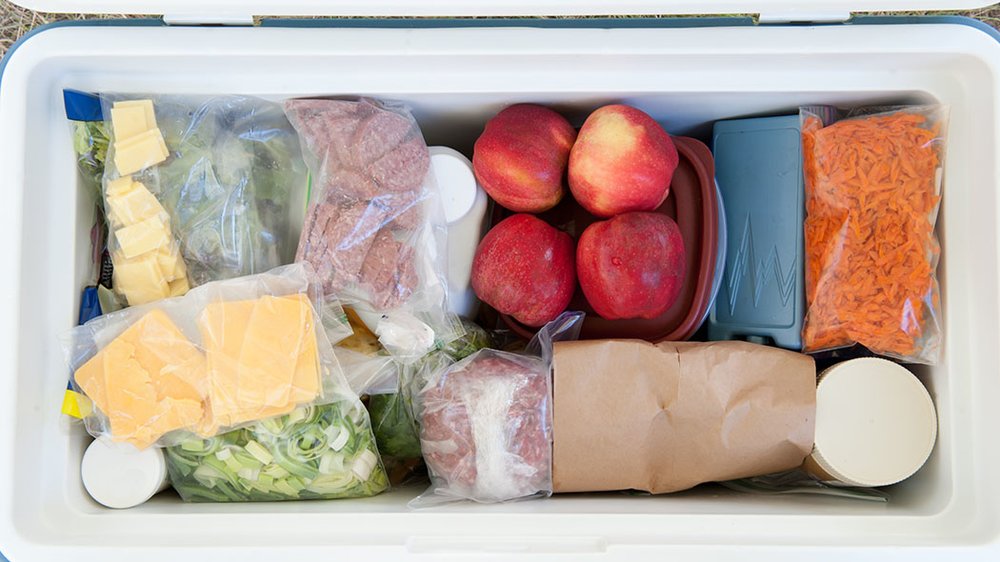Effective Ways to Reduce Your Risk of Food Poisoning
We’re only a few months into 2018 and there have already been 7 large-scale food poisoning outbreaks in the U.S. including the latest E. Coli scare involving romaine lettuce which forced restaurants to take salads off their menus as well as salmonella-contaminated eggs which compelled 9 states to recalls more than 209 million eggs.

A recent multi-state salmonella contamination forced 9 states to recall more than 209 million eggs
Increasing Number of Outbreaks
The recent E. Coli outbreak from contaminated romaine lettuce was the biggest incident so far which targeted 172 people in 32 states. Salmonella outbreak also appeared in the news on several occasions with contamination tracing back to foods like raw sprouts, dried and frozen coconut and chicken salad. The total number of large-scale food poisoning outbreaks was 8, whereas in 2016, it was 14.
Every year, more than 40 million people suffer from food poisoning in the Unites States, of which almost 3,000 lose their lives. We had previously been told that the most common culprits of food poisoning are raw meats and eggs, but now, contaminations are showing up in foods that you’d never consider dangerous, like lettuce, salami, vinegar, cereal and even raspberries.
Because of today’s booming global food economy, edible products can be produced in bulk thousands of miles and transported around the country, and sometimes even internationally. Animals used in the meat and poultry industries are also packed together in large numbers, increasing the risk of contamination spreading far and wide before being detected by health experts.

Defrosting meats should be done in the fridge or microwave instead of kitchen counter to reduce the risk of it going bad
Storing and Handling Raw Meats
If you take necessary precaution while purchasing food, you can protect yourself against food poisoning – but only to a certain extent. The golden rule is to ensure that all foods that are meant to be cold are stored away in the refrigerator immediately. During summer, when it is hot outside, and if it takes you longer than one of two hours to get the food from the supermarket to your fridge, carry an ice cooler or insulated box to prevent it from going bad.
When putting raw meat or poultry in the fridge, it is recommended to use a leak-proof bag for storing it so that it does not drip and contaminate other foods. Defrosting frozen meats should not be done outside in the heat or on kitchen counter. Instead, plan ahead in time and put the frozen meat in the fried for 6-8 hours before cooking it. Most microwaves also have a defrost feature that can be used for thawing frozen meats quickly and safely.
Food safety experts discourage the practice of leaving raw meat in the sink or rinsing it under water which can only spread germs in the kitchen which can cause cross-contamination with foods that are meant to be eaten raw.

Any sickness from pre-cooked foods should be reported to local health department immediately to prevent a mass outbreak
Avoiding Cross-Contamination
Personal hygiene in the kitchen is equally important to ensure that the food is safely prepared. Wash your hands with disinfecting soap, paying close attention to the wrists and skin underneath the nails. Clean the kitchen surfaces with a bleach solution or commercial cleaning liquid before starting. When chopping ingredients, use a sperate cutting board and knife for raw meats than for fresh produce. Fruits like melons and cantaloupes should be washed thoroughly before cutting and peeling to prevent the germs on the skin from transferring to the flesh inside the fruit.
Even if you’re extremely careful with handling food in the kitchen, it is almost impossible to eliminate food poisoning risk, especially considering our heavy reliance on restaurants and frozen foods prepared in an unknown location by an unknown food handler.
If you suspect a queasy feeling taking over your stomach after eating something from a restaurant or a takeout joint, you may still be able to help others by talking to the local health department about your experience and preventing a food poisoning outbreak. However, it isn’t easy to pinpoint the culprit behind the food poisoning since different foods have varying ‘transit time’ – or the time it takes for them to be digested.
Different sickness-causing organisms also take varying activation time; for example, while symptoms of Staphylococcus aureus attack can show within two hours of consuming a contaminated food, E. Coli can take up to 10 days before showing signs of sickness.
